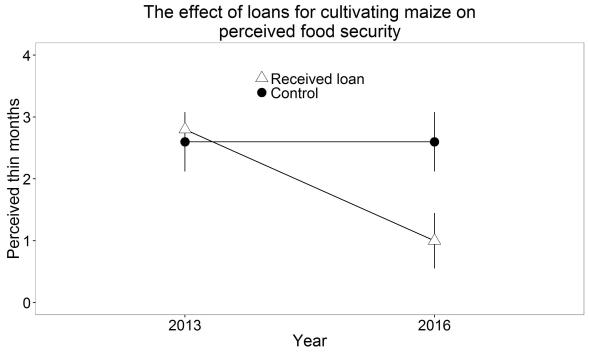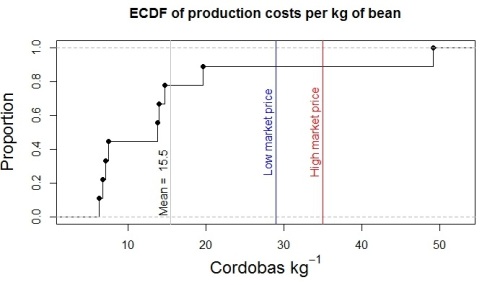Many of the Central American families that produce the coffee we love to brew suffer from poverty and chronic food insecurity. In 2016, R4Dsct conducted a food security assessment within the “Mejoramiento de la Seguridad Alimentaria de Productores y Productoras de Café Asociados a UCA SOPPEXCCA R.L.” program. SOPPEXCCA, one of the biggest coffee merchandising cooperatives in Nicaragua, and Food 4 Farmers, a US based NGO working to alleviate food insecurity in coffee landscapes, established a program that facilitated low rate, short term credit lines to farmers. These credits were specifically geared to incentivize corn and bean cultivation. These crops represent staple meals in the diets of millions of Nicaraguans. Additional credit and technical assistance was offered to promote cocoa and “achiote” (Bixa orellana) cultivation. Most of the families engaged in this program live in Jinotega, Nicaragua. This program was established in collaboration with Keurig Green Mountain, a leading coffee roaster in the US.

Location of the study site in Jinotega, Nicaragua
In the context of this program, R4Dsct was in charge of developing the Monitoring and Evaluation piece. This was done in coordination with the “técnicos” of SOPPEXCCA. We developed a series of baseline studies and comparison experiments, with the goal of testing whether crop diversification strategies and access to credit improved the self-perception of food security and the crop production capacity of families participating in the program.
As a way of establishing a baseline for program participants, heads of household were first interviewed in 2014. A subset of households were interviewed after receiving and utilizing credits in 2016. An important consideration and strength of this evaluation is that a group of non-participating households were included in the assessment as a control group. This feature of the program allowed us to tease apart effects caused by the participation of farmers in development strategy from those arising from uncontrolled socioeconomic changes due to the political situation of the country and deviations in the coffee markets.
Coffee farmers made use of credit to increase food production and strengthen food security
The food security assessment conducted by R4Dsct demonstrated that providing accessible credit lines to farmers to cultivate their own staple grain crops (maize and beans) sustained or improved the self-perception of food security status within the participating households. When compared to households that did not have access to these credits, families participating in the SOPPEXCCA – Food 4 Farmers program reported more resilience in the face of food insecurity. This effect was observed despite a decline in coffee production -generated income due to lower market prices and decreased yields.

Comparison of the reported number of months when there were difficulties meeting food needs (“thin months”) between households receiving and not receiving loans to cultivate corn
In addition to the positive impact of security in households, having access to micro credits boosted household food production. Overall, 90% of farmers reported obtaining desirable crop yields and successfully harvesting their crop. An important proportion of the food produced was kept within the household to cover the dietary needs of the family and provide meals for laborers hired to harvest coffee. In addition, many households reported selling beans and corn, thus increasing income revenue sources and quantity. For example, it was estimated that on average, farmers involved in this program produced enough beans to feed 27 people for an entire year.

Households that obtained credit lines through the SOPPEXCCA – Food 4 Farmers program saw and increase in black bean production. This trend was not observed in those households not participating in the program.
This food security assessment also demonstrated that the cost of opportunity to produce beans was low. For instance, after accounting for all production costs, producing their own staple beans and maize saved farmers considerable amount of money. In most cases, additional revenue was obtained from selling the surplus beans.

Once all costs of production were accounted for, 90% of farmers invested 1/3 to 2/3 less capital in producing beans than the expected cost of buying this grain in the market place
Working with R4Dsct guarantees successful monitoring and evaluation process
This assessment demonstrates some of the advantages of working with R4Dsct. For example, the technical team on R4Dsct provided invaluable support in the design and implementation of the experiments, data collection campaigns and analysis. Furthermore, the strong rapport R4Dsct is able to build with its clients and partners and our capacity to organize efficient monitoring and evaluation process through capacity building activities and collaborative work guaranteed optimum results of the monitoring and evaluation process.

A participant displays an upcoming cocoa tree established in coordination with the SOPPEXCCA crop diversification program
